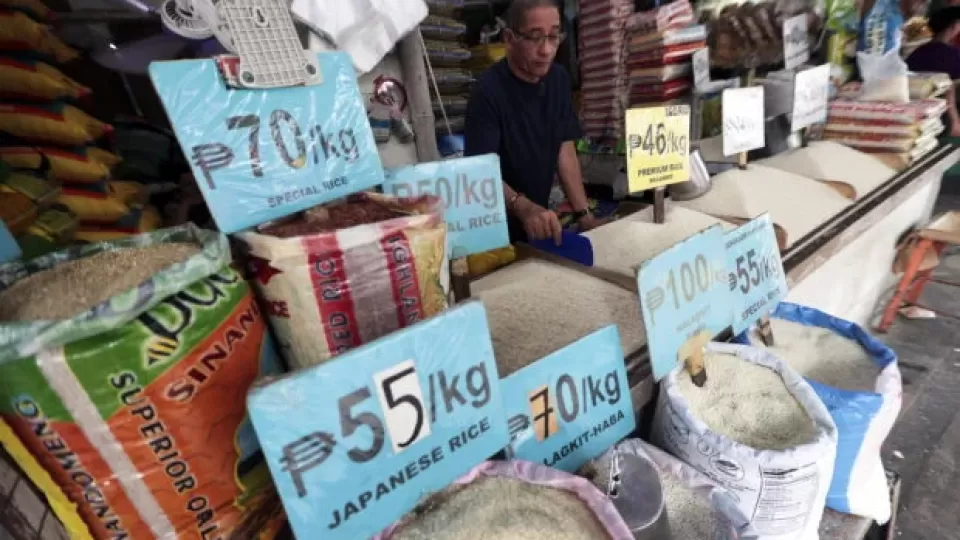April 6, 2023
MANILA — The government’s goal to bring down rice prices has remained elusive as production costs stay high due to expensive fertilizer and other farm inputs and as local harvests continue to decline.
In fact, the Department of Agriculture (DA) in fact expects retail prices of the staple to increase by as much as P5 a kilo in the next few weeks, according to the agency’s assistant secretary, Rex Estoperez.
“As of now, we are seeing an increase of up to P5 per kilo in rice. If wholesale prices continue to rise, definitely prices in the retail markets will increase. If the farm-gate price (of palay) goes up, that will translate to higher selling prices (for rice),” he told reporters.
As a rule of thumb, the retail price of rice in the market is at least double the farm-gate price of palay.
Estoperez, who is also the agency’s deputy spokesperson, attributed the potential price increase to the confluence of factors such as the low buffer stock, higher prices of palay (unhusked rice), and expensive farm inputs.
The state-owned National Food Authority (NFA) used to buy palay for P19 a kilo, but Estoperez said prices have now gone up to P22 to P23.
“The procurement price is very high. Even if this is a normal occurrence during the summer harvest, the price of palay is too steep. Price levels are abnormal [and have] already reached P23,” the agriculture official pointed out.
Low inventory
Prices could have stabilized if the Philippines has sufficient inventory that is good for 90 days, but Estoperez noted that the country’s buffer stock was good for only 51 days
As of January this year, the Philippine Statistics Authority (PSA) said rice inventory nationwide shrank by 30.3 percent to 1.77 million metric tons (MT) from 2.53 million MT in December 2022. This was also 5.1 percent lower than the 1.86 million MT buffer stock a year ago.
The country’s rice stockpile should be 37,000 MT a day or 3.33 million MT good for three months.
Rice stored in households, which accounted for 60.4 percent of the total inventory, grew by 7.6 percent to 1.07 million MT.
However, rice in the NFA warehouses, which accounted for 33.1 percent of the total and geared mainly for low-income consumers, plummeted by 44.8 percent to 114,910 MT.
Rice stocks in the commercial sector also decreased by 11.5 percent to 583,730 MT.
“Our inventory is good for 51 days only. Normally, we maintain a buffer of 90 days across all the sectors, both private sector and government inventory,” Estoperez said.
“The government’s inventory is declining because we have to also participate in programs of the government,” he added, referring to the Kadiwa ng Pangulo program where rice and other agricultural commodities are sold at cheap prices to low-income families.
The government imports rice to cover the supply shortfall and as of March 23 this year, the Bureau of Plant Industry (BPI) reported that the country has imported 663,806.364 MT of rice mainly from Vietnam.
In 2022, the Philippines imported 3.83 million MT of rice, of which 2.36 million MT came from Vietnam, data from the BPI showed.
Campaign promise
Markets in Metro Manila were selling locally produced regular milled rice from P34 to P40 a kilo as of Tuesday, hardly unchanged from P38 a year ago, based on the DA’s price monitoring.
Local well-milled rice is priced from P39 to P46 a kilo, while local premium rice is sold from P42 to P49. Special rice ranges from P48 to P60 a kilo.
Meanwhile, imported regular milled rice retails from P37 to P44 a kilo against last year’s P37 and well-milled rice from P40 to P46. Premium rice sourced from abroad is priced from P43 to P52 a kilo, nearly the same as last year’s level. Special rice is sold from P50 to P58 a kilo.
The government wants to bring down rice prices to as low as P20 a kilo, a campaign promise of President Ferdinand Marcos Jr.
During the launching of the Kadiwa ng Pangulo, where the commodity is sold at P25 a kilo, in Camarines Sur province last month, the President said his campaign promise would soon become a reality.
“We have not yet accomplished the mission to bring the price of rice to P20 per kilo, but we’re getting there, little by little. We’re already at P25 per kilo, just a little more, we can bring that down soon,” he said.
However, the DA said the surge in global prices of farm inputs such as fertilizer was making it impossible to attain this ambition in the near future.
“Our gauge here is productivity. But with what is happening globally, with the increase in (prices of) fertilizer and inputs, it seems we cannot change the price drastically overnight,” Estoperez said.
The Kadiwa project started as the Kadiwa ng Pasko during the Christmas season but was expanded to Kadiwa ng Pangulo to provide consumers with fresh and affordable agricultural and fishery products.
The project also helps local farmers, fishermen, and small enterprises, which were hit hard by the COVID-19 pandemic, according to Marcos.
He said there were already more than 500 Kadiwa stores nationwide, and vowed that the government would put up more outlets.


